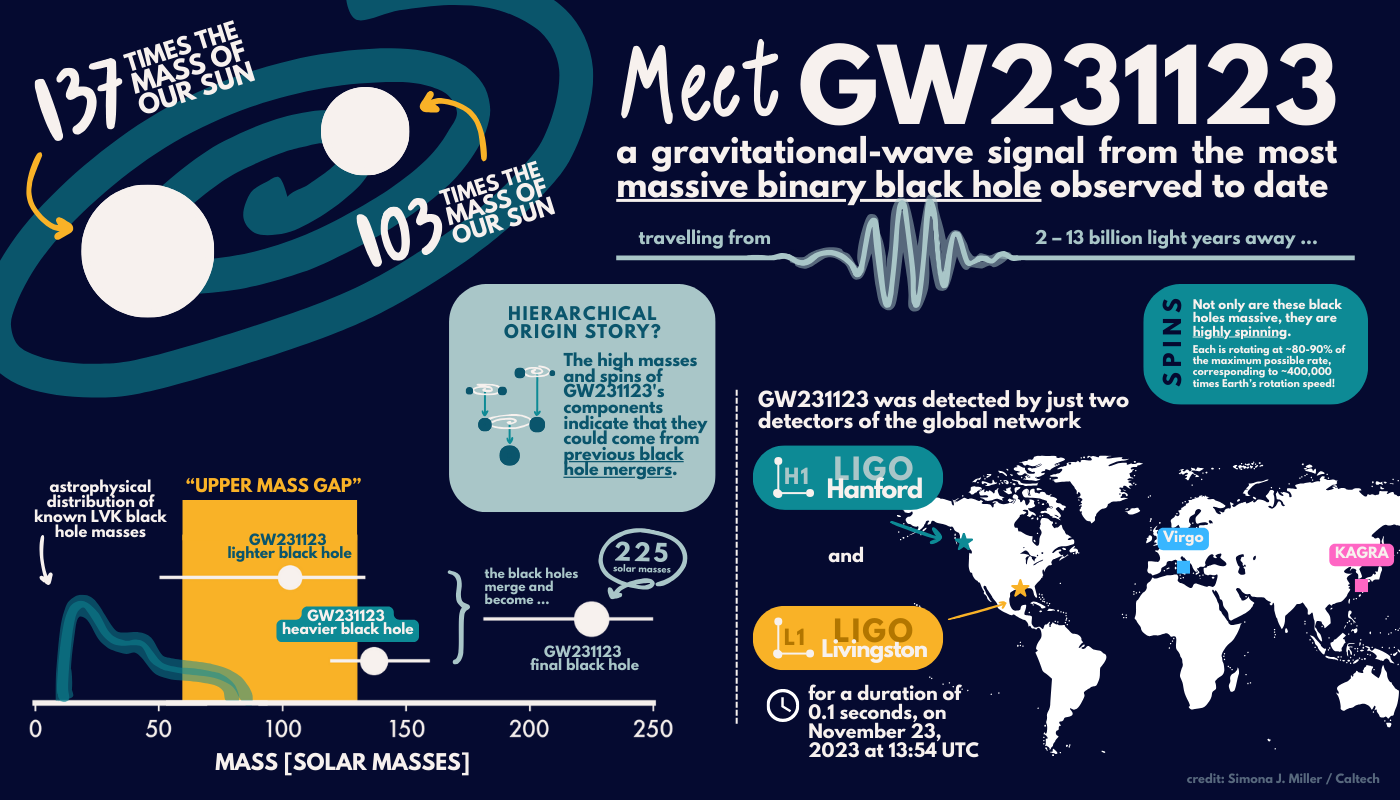The collaborating gravitational wave experiments LIGO-Virgo-KAGRA (LVK) have reported the detection of the merger of the most massive black holes ever observed with gravitational waves.
The merger produced a black hole that ultimately had more than 225 times the mass of our sun. The signal, named GW231123, was observed during the fourth observation run (O4) of the LIGO-Virgo-KAGRA network on November 23, 2023, at the LIGO observatories in Hanford and Livingstone.
Nikhef, along with other institutes, is a partner in the LVK collaboration, and is closely connected to the Virgo gravitational wave detector in Italy.
Unique signal
The two black holes that merged had approximately 103 and 137 times the mass of the sun. In addition to their high mass, they also rotate rapidly, making this a unique signal that is difficult to interpret and which suggests the possibility of a complex formation history.

“Current models of stellar evolution do not actually allow for the existence of such massive black holes, which may have been formed by previous mergers of smaller black holes,” says Ed Porter of CNRS in Paris, one of the partners in LVK.
Pushing boundaries
About 100 black hole mergers have been observed previously through gravitational waves. Until now, the most massive binary was the source of GW190521, with a much smaller total mass of “only” 140 times that of the Sun.
The high mass and extremely rapid rotation of the black holes in GW231123 push the boundaries of both the technology for detecting gravitational waves and current theoretical models. To extract accurate information from the signal, theoretical models had to be used that take into account the complex dynamics of rapidly spinning black holes.
Gravitational wave detectors such as LIGO in the United States, Virgo in Italy, and KAGRA in Japan are designed to measure minute distortions in space-time caused by violent cosmic events such as black hole mergers. The fourth observation run began in May 2023, and observations from the first half of the run (through January 2024) will be published later this summer.
Open science
The announcement of GW231123 opens a new season of results, with many more expected over the course of the summer and a steady stream of findings over the next two years. Publications will be followed by the release of the data, in support of the broader scientific community and open science.
GW231123 will be presented this week at the 24th International Conference on General Relativity and Gravitation (GR24) and the 16th Edoardo Amaldi Conference on Gravitational Waves, held jointly as the GR-Amaldi meeting in Glasgow, United Kingdom.